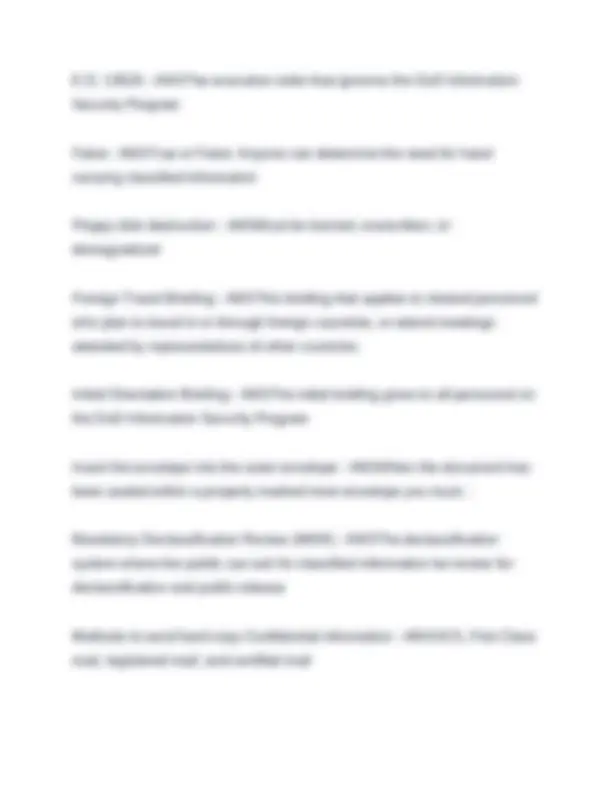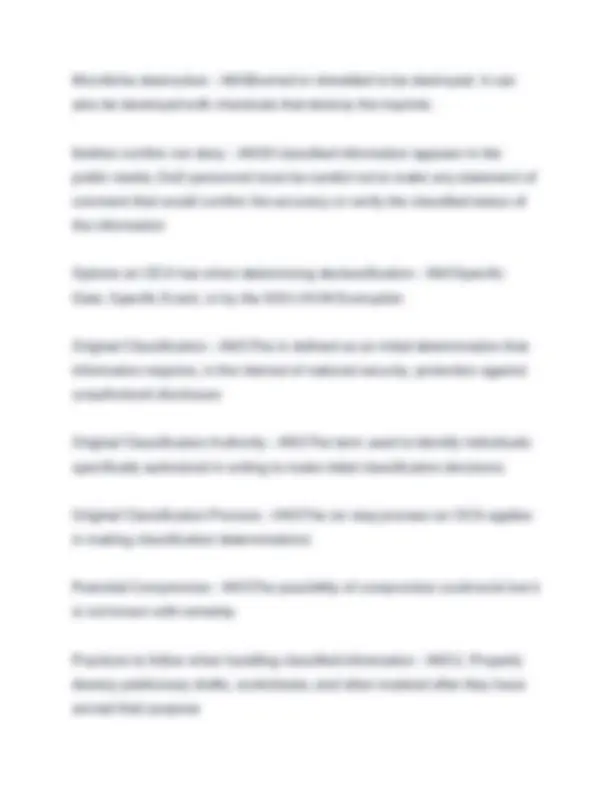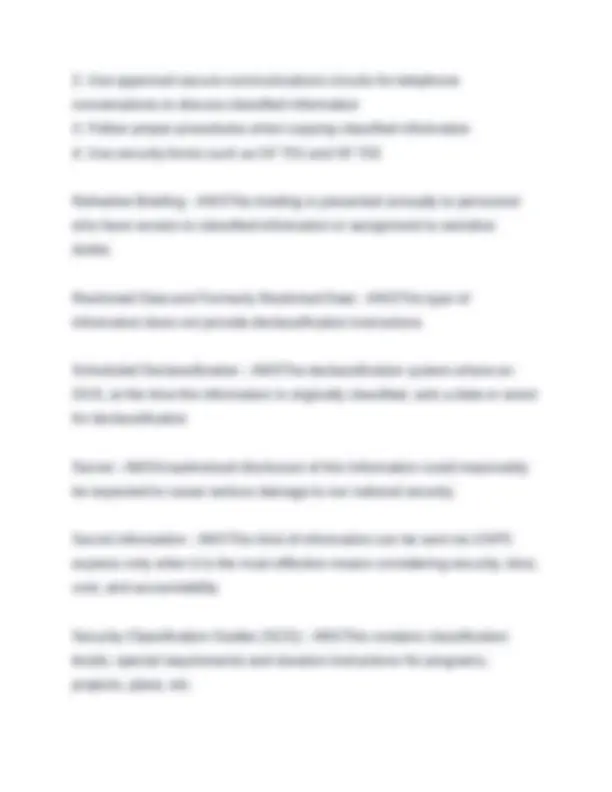





Study with the several resources on Docsity

Earn points by helping other students or get them with a premium plan


Prepare for your exams
Study with the several resources on Docsity

Earn points to download
Earn points by helping other students or get them with a premium plan
Community
Ask the community for help and clear up your study doubts
Discover the best universities in your country according to Docsity users
Free resources
Download our free guides on studying techniques, anxiety management strategies, and thesis advice from Docsity tutors
SPēD SFPC: INFOSEC TEST LATEST EDITION 2025-2026. QUESTIONS & CORRECT VERIFIED ANSWERS. GRADED A
Typology: Exams
1 / 7

This page cannot be seen from the preview
Don't miss anything!




32 CFR Parts 2001 & 2003, "Classified National Security Information; Final Rule" – ANS The Information Security Oversight Office (ISOO) document that governs the DoD Information Security Program Actual compromise - ANSAn unauthorized disclosure of classified information Automatic declassification - ANSThe declassification system where Permanently Valuable Historical records are declassified when they are 25 years old Compilation - ANSThis is defined as unclassified information or classified information (at a lower level) that when the information is combined or associated reveals additional factors that qualifies for classification. COMSEC - ANSThe protection resulting from the measures designed to deny unauthorized persons information of value that might be derived from the possession and study of telecommunications and to ensure the authenticity of such communications.
Confidential - ANSUnauthorized disclosure of this information could reasonably be expected to cause damage to our national security. Custodians - ANSPeople who are in possession of, or who are otherwise charged with safeguarding classified information DCS - ANSDefense Courier Service DD Form 2501 - ANSCourier Authorization Card Declassification - ANSThe authorized change in the status of information goes from classified information to unclassified information Derivative Classification - ANSThis is defined as the incorporating, paraphrasing, restating, or generating in new form any information that is already classified. DISA, Joint Interoperability Test Command (JITC) - ANSThis organization maintains a register of certified security digital facsimiles Document destruction - ANSMust be burned, shredded, or chemically decomposed of DoD Manual 5200.01, Volumes 1-4 - ANSThe manual that governs the DoD Information Security Program
Microfiche destruction - ANSBurned or shredded to be destroyed. It can also be destroyed with chemicals that destroy the imprints. Neither confirm nor deny - ANSIf classified information appears in the public media, DoD personnel must be careful not to make any statement of comment that would confirm the accuracy or verify the classified status of the information Options an OCA has when determining declassification - ANSSpecific Date, Specific Event, or by the 50X1-HUM Exemption Original Classification - ANSThis is defined as an initial determination that information requires, in the interest of national security, protection against unauthorized disclosure. Original Classification Authority - ANSThe term used to identify individuals specifically authorized in writing to make initial classification decisions. Original Classification Process - ANSThe six step process an OCA applies in making classification determinations Potential Compromise - ANSThe possibility of compromise could exist but it is not known with certainty Practices to follow when handling classified information - ANS1. Properly destroy preliminary drafts, worksheets, and other material after they have served their purpose
Top Secret - ANSUnauthorized disclosure of this information could reasonably be expected to cause exceptionally grave damage to our national security. Top Secret information - ANSThis kind of information can never be sent via USPS True - ANSTrue or False: Hand carrying classified information should only be done as a last resort True - ANSTrue or False: When someone is carrying classified information, written authorization is always required Typewriter ribbon destruction - ANSRibbons must be burned or shredded Unauthorized Disclosure - ANSCommunication or physical transfer of classified or controlled unclassified information to an unauthorized recipient Videotape destruction - ANSMust be burned, shredded, or demagnetized